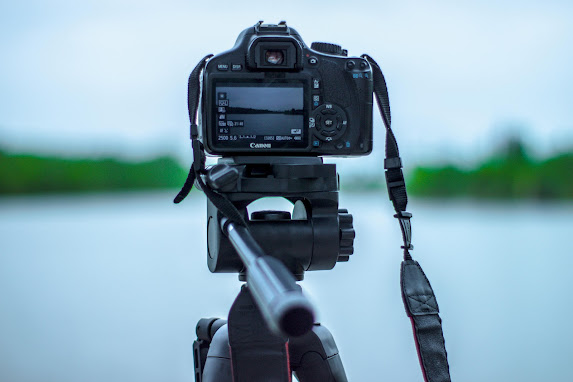Landscape photography requires a specific set of equipment to capture stunning images of nature and the outdoors. Here's a list of essential gear for a landscape photographer:
1. **Camera Body**: A high-resolution camera body, such as a DSLR or mirrorless camera, is necessary for capturing detailed images. Models with good dynamic range and low noise performance at high ISO settings are ideal for landscape photography.
2. **Wide-Angle Lens**: A wide-angle lens (typically 14-35mm on a full-frame camera) allows you to capture more of the scene in a single shot, which is crucial for vast landscapes.
3. **Telephoto Lens**: While not always needed for every shot, a telephoto lens (70-200mm or longer) can be useful for isolating elements of the landscape or for photographing distant subjects like wildlife.
4. **Tripod**: A sturdy tripod is essential for stabilizing the camera, especially when using long exposures, graduated ND filters, or capturing images at low light or in windy conditions.
5. **Polarizing Filter**: Polarizing filters reduce glare and reflections on water and foliage and enhance the contrast in the sky.
6. **Graduated Neutral Density (ND) Filters**: These filters help balance exposure in scenes with a wide dynamic range, like a bright sky and dark foreground.
7. **Remote Shutter Release**: This device allows you to take photos without touching the camera, reducing the risk of camera shake during long exposures.
8. **Lens Cleaning Kit**: Keeping your lenses clean is vital for sharp images. Invest in a good quality cleaning kit with lens wipes, a blower, and a cleaning solution.
9. **Extra Batteries and Memory Cards**: Ensure you have enough power and storage to last throughout your photography sessions.
10. **Camera Bag**: A comfortable and weather-resistant camera bag to store and protect your gear during hikes or travel.
11. **Lens Hood**: A lens hood prevents stray light from entering the lens and causing lens flare.
12. **Circular Polarizing Filter**: Helps to reduce reflections and enhance colors in the sky and foliage.
13. **Neutral Density (ND) Filters**: Useful for achieving longer exposures in bright conditions, allowing for the capture of moving elements like water and clouds.
14. **Lens Cloth**: Quickly clean off dust, smudges, and moisture from your lens.
15. **Tripod Head**: A good tripod head, such as a ball head, makes it easier to adjust and frame your shots.
16. **Cable Release or Intervalometer**: For long exposures or time-lapse photography, a cable release or intervalometer automates the process of taking multiple shots.
17. **Sturdy Tripod**: Invest in a tripod that can support your camera and lens setup in various terrains and weather conditions.
18. **Headlamp or Flashlight**: For early morning or night photography sessions.
19. **Weather Sealed Camera and Lenses**: If you often shoot in harsh weather conditions, weather-sealed gear will protect your equipment from the elements.
20. **Lens Cap**: Prevents dust and moisture from entering the camera when not in use.
21. **Spare Lenses**: Depending on the diversity of your shots, you might consider carrying a wide-angle zoom, a telephoto zoom, and a prime lens for different perspectives.
22. **Lens Wipes**: For quick and safe cleaning of lenses and filters on the go.
23. **Lens Pen**: A handy tool for removing dust and smudges without leaving streaks.
24. **Rain Cover**: Protects your camera and lens from rain, snow, and mist.
25. **Memory Card Reader**: To quickly transfer images from your memory cards to your computer or backup device.
26. **Laptop/Tablet**: For reviewing images, editing on the go, and backing up your photos.
27. **Camera Strap**: Comfortably carries your camera around your neck or over your shoulder.
28. **Battery Grip**: Extends battery life and provides a more stable grip, particularly for larger cameras.
29. **Microfiber Cloths**: For cleaning the camera body and LCD screen.
30. **Lens Filters**: UV, ND, and polarizing filters can protect your lens and enhance the quality of your images.
31. **Spare Batteries**: Always carry at least one extra battery for your camera.
32. **Lens Cap**: Prevents dust and moisture from entering the camera body when lenses are changed.
33. **Camera Cleaning Brush**: A small brush for removing dust from camera body and lenses.
34. **Lens Blower**: For quickly blowing dust off lenses and camera sensors.
35. **Lens Cleaning Solution**: For thorough cleaning of your camera's optics.
36. **Tripod Plate**: Allows for quick attachment and removal of your camera from the tripod.
37. **GPS Module**: To geotag your images with location data.
38. **Interchangeable Lens Camera**: A camera with interchangeable lenses provides flexibility in focal lengths.
39. **L-Bracket**: Facilitates quick switching between horizontal and vertical orientations on a tripod.
40. **Waterproof Camera Cover**: For wet weather or underwater photography.
41. **Camera Backpack**: A dedicated backpack can safely carry your camera and other gear during hikes.
42. **Spare Camera Battery Charger**: Ensures you can charge your batteries even if you forget to pack the original.
43. **Reflector/Diffuser**: Can be used to manipulate light during golden hour or to fill in shadows.
44. **Grey Card/White Balance Tool**: Helps ensure accurate color balance in your photos.
45. **Shutter Release Cable**: For taking photos without touching the camera to reduce shake.
46. **Remote Trigger**: Useful for capturing images from a distance or for self-timed shots.
47. **Spare Memory Cards**: Don't run out of storage space in the middle of a shoot.
48. **Cleaning Brush**: A soft-bristled brush for cleaning lenses and camera body.
49. **Lens Cleaning Pads**: For more thorough cleaning of lenses and filters.
50. **Camera Rain Cover**: To protect your camera from the elements during outdoor shoots.
Remember to also pack a tripod if you plan on using long exposures or shooting in low light, and consider bringing along graduated filters to balance the exposure in scenes with a high dynamic range. A sturdy camera bag and comfortable carrying system are also essential for protecting your gear and keeping it organized during hikes. Finally, don't forget to dress appropriately for the weather conditions, including sturdy shoes for navigating rugged terrain.
